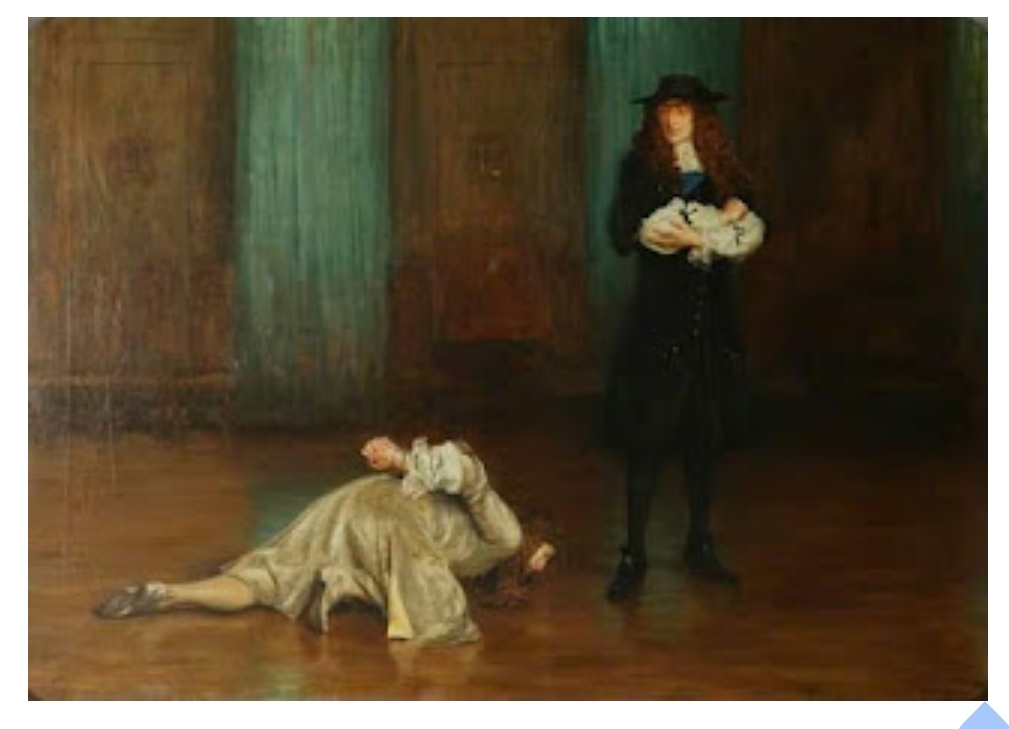
When the Duke had rode off from the scene of the battle early morning on the 6th of July 1685 a price had already been placed on his head of £5000 pounds. After reaching the relative safety of Downside, a few hours rest was achieved at the ‘safe’ house of Edward Strode.
In the darkness, his small party hurried down through Somerset, passing selwood forest entering north east Dorset around Gillingham, and then further through the Cranbourne chase. The objective, to reach Poole and seize a ship and sail to the continent. At the Woodgate inn, the Duke, exchanged clothes with a bemused shepherd to give him a more country look!
Near Wimborne St Giles the beleaguered horses were set free and the rest of the journey covered on foot. After splitting in to pairs, two being caught within 6 miles of Poole, the Duke made a slower approach before splitting away from Buyse upon reaching the woodlands in Horton parish. Hungry and tired, he picked peas from the field and concealed himself within a ditch. But, they had been spotted by a local lady by the name ofAmy Farrant, and when one of the Sussex militiamen’s patrols passed by she reported the strangers.
The search to find what they suspected, the Duke of Monmouth, the search intensified and early on the 8th of July, militiaman Parkin, found the poor Duke in the ditch beneath the tree known today as the ‘Monmouth ash’. His identity was still in doubt though, until Lord Lumley arrived. Finding the ‘Lesser George’ ( part of the insignia of the Order of the Garter) and his pocket book upon him, the game was up. Held prisoner for two nights at Ringwood, news spread to London rapidly about his capture must to the joy of his uncle King James. On the 10th they reach Winchester, the next day Farnham Castle then onward to Guildford.


During these days the Duke wrote a string of begging letter to the King and other influential people to try and save, what his must have know, was coming!!! On Monday the 13th he entered London through Lambeth crossing the Thames by boat to the privy stairs at Whitehall. Spotted by a friend, Lord Aylesbury who landed at the same time, he saw a ‘lean and pale with a disconsolate physiognomy’ led up the stairs on the Westminster side.
The Duke of Monmouth was promptly dispatched to the Tower. Two days later, he would be dead, executed at the hands of the executioner, Jack Ketch. Despite writing even more letter to influential people, and even the Queen herself during his two days it wasn’t to be his day. Even the granting of sn audience with the King himself, his uncle, rather surprisingly, there was to be no reprieve despite his grovelling with his hands bound behind his back.
To Monmouth’s credit, he regained his composure and was to go to his death with dignity. In the last hours he saw his estranged wife and their 3 children, and signed a written statement to the effect that his father, King Charles the ll had always told him that he had never married his mother, Lucy Walters ( the mystery of the ‘Black box’, another story).
Brought to Tower Hill on July the 15th, he resisted with patience, the repeated attempts by two bishops to publicly repent against his heinous sin to rebel against the King. He did apologise from his heart for all the troubles he had caused, particularly those who supported him and declared his undying affection for Lady Henrietta Whentworth, but would go no further than that. On the scaffold, the Duke gave the customary sum of money to his execution, plus even more through his servants, if he, should we say, do the deed neatly! Alas I’m afraid it wasn’t to be be. The bungling Jack Ketch barely broke the skin of the neck with the first blow!
To the horror of the vast and mainly sympathetic crowd, after another 4 attempts the head was still on, Monmouth was still alive!!! But hopefully not aware of what was happening anymore. Throwing down the axe Jack Ketch refused to continue and the sheriff of London, with no doubt a few choice words of what would become of him if he didn’t carry out his duties finally hacked off the head with a knife!
His body, and severed head in a red bag lying beside the coffin were brought back to the chapel is St Peter ad Vincula where he now rests.
‘Thus died ignominiously the finest nobleman eyes ever saw as to his exterior, and that was all, save that he was of the most courteous and polite behaviour that can be expressed’ Lord Aylesbury wrote.
It was over for James Scott, Duke of Monmouth, he had paid the highest price for Treason, but for his supporters, the hunt was now on.
The artist interpretations below show Monmouth begging at the Kings feet whilst the other shows the severed head reunited with body prior to burial.
We hope that you have enjoyed reading our blog on the “From Yesterday to Tomorrow: Exploring the Journey of History”. If you enjoy this blog please let us know in the comments below. If you are interested in history, we recommend you check out our other blogs here on the “world history and local gist”. Thank you for reading.










Leave a Reply